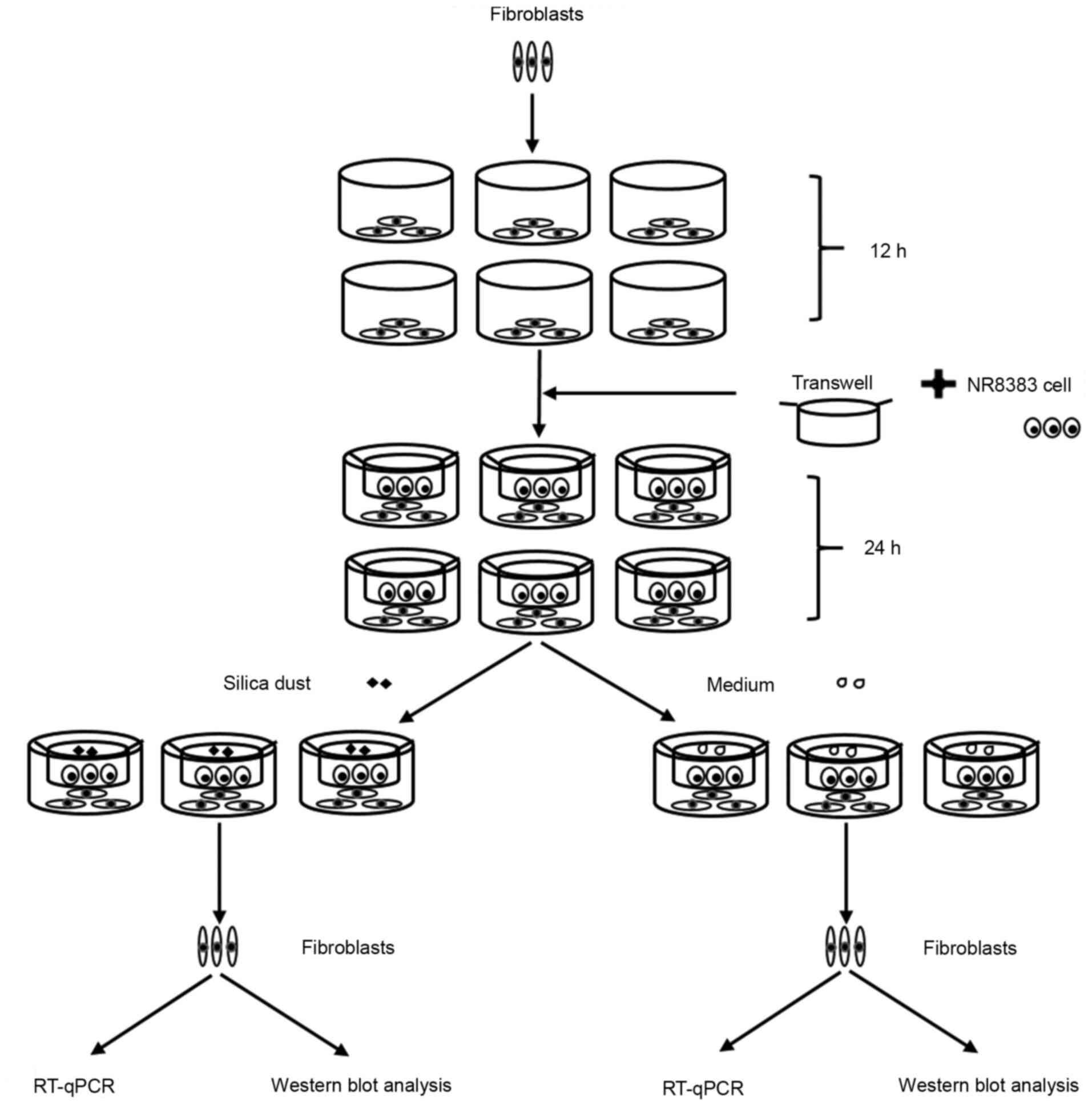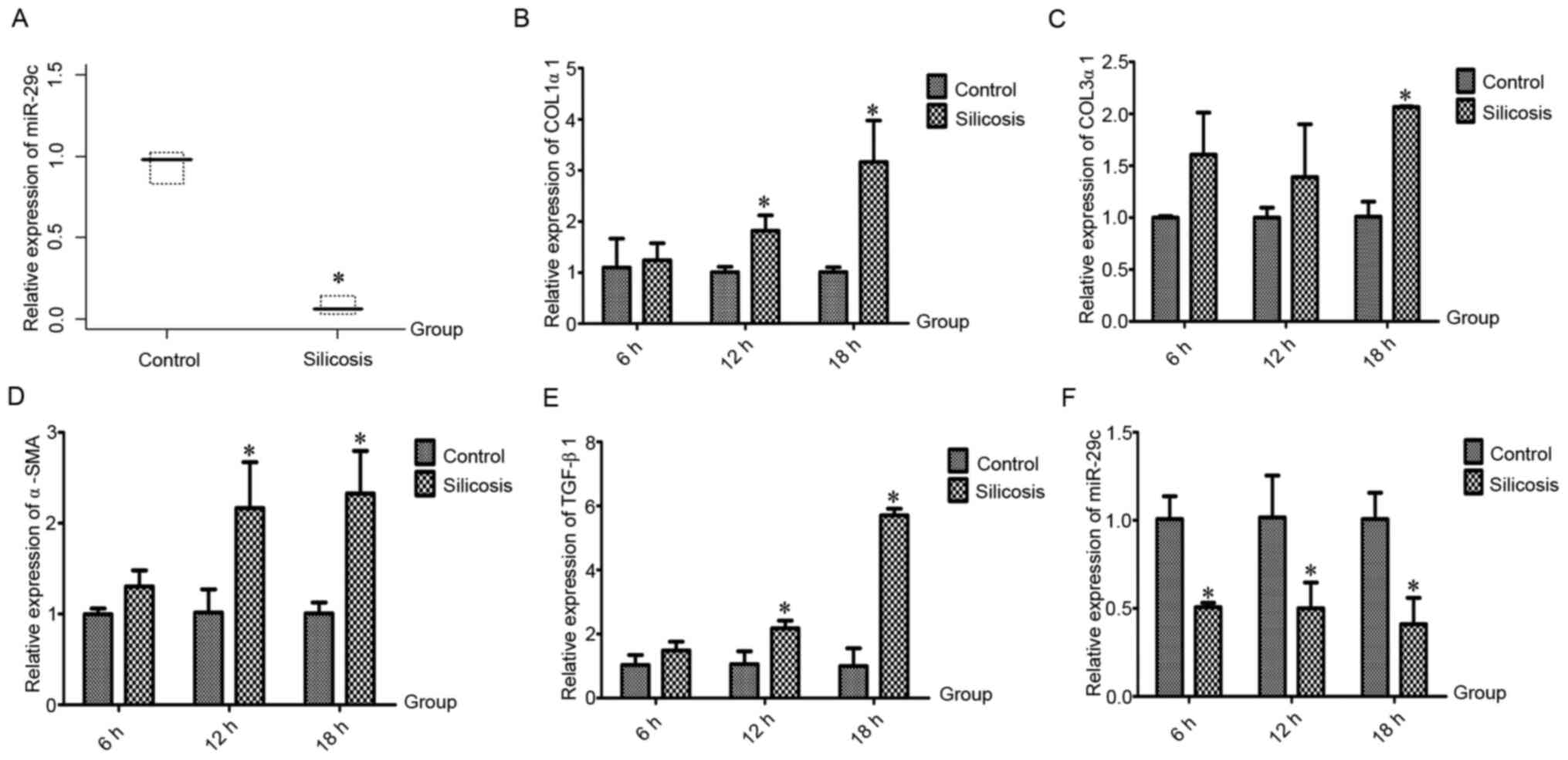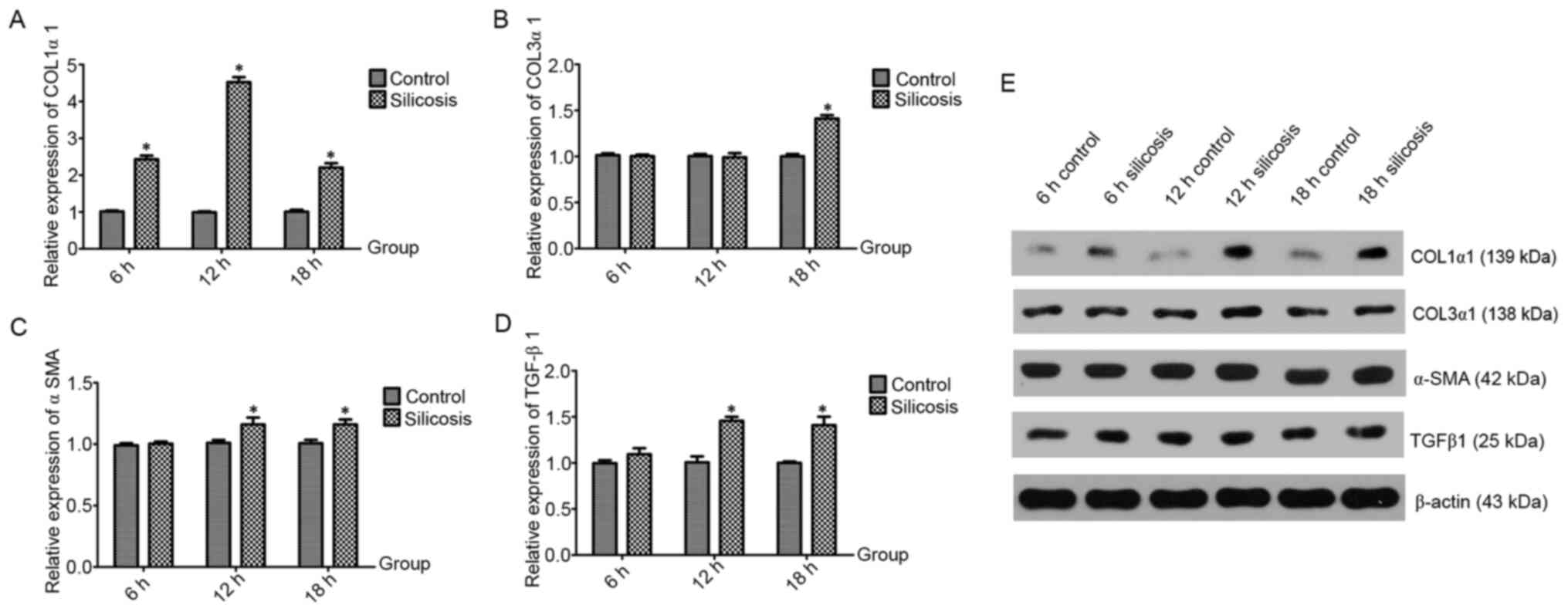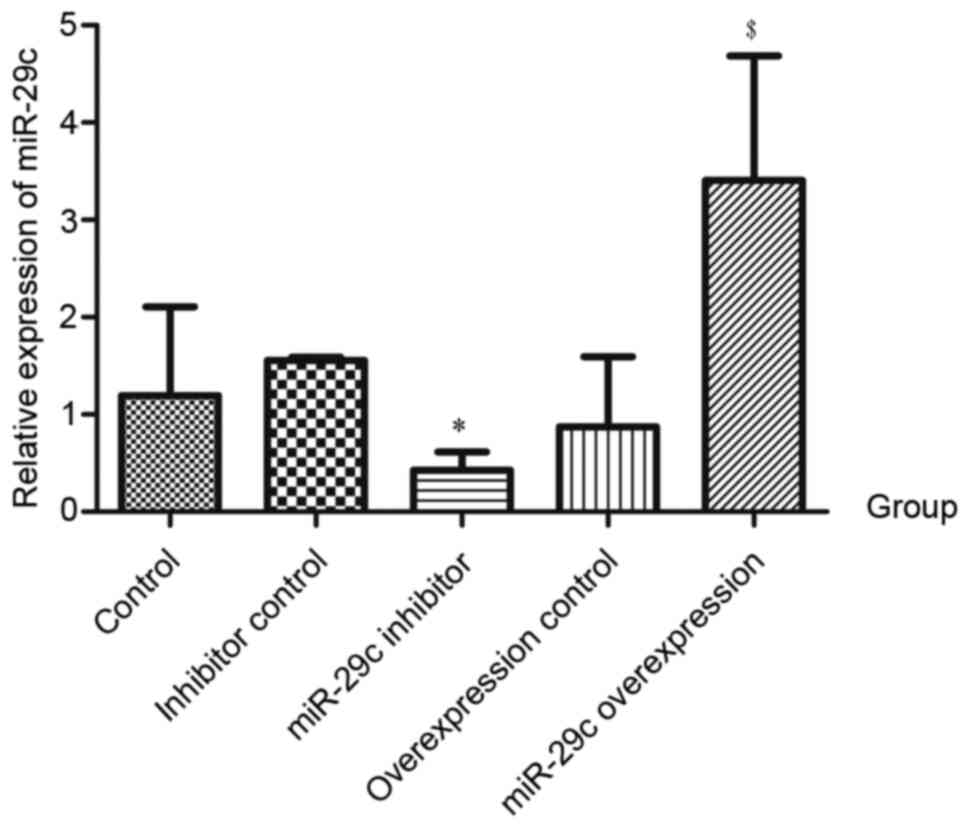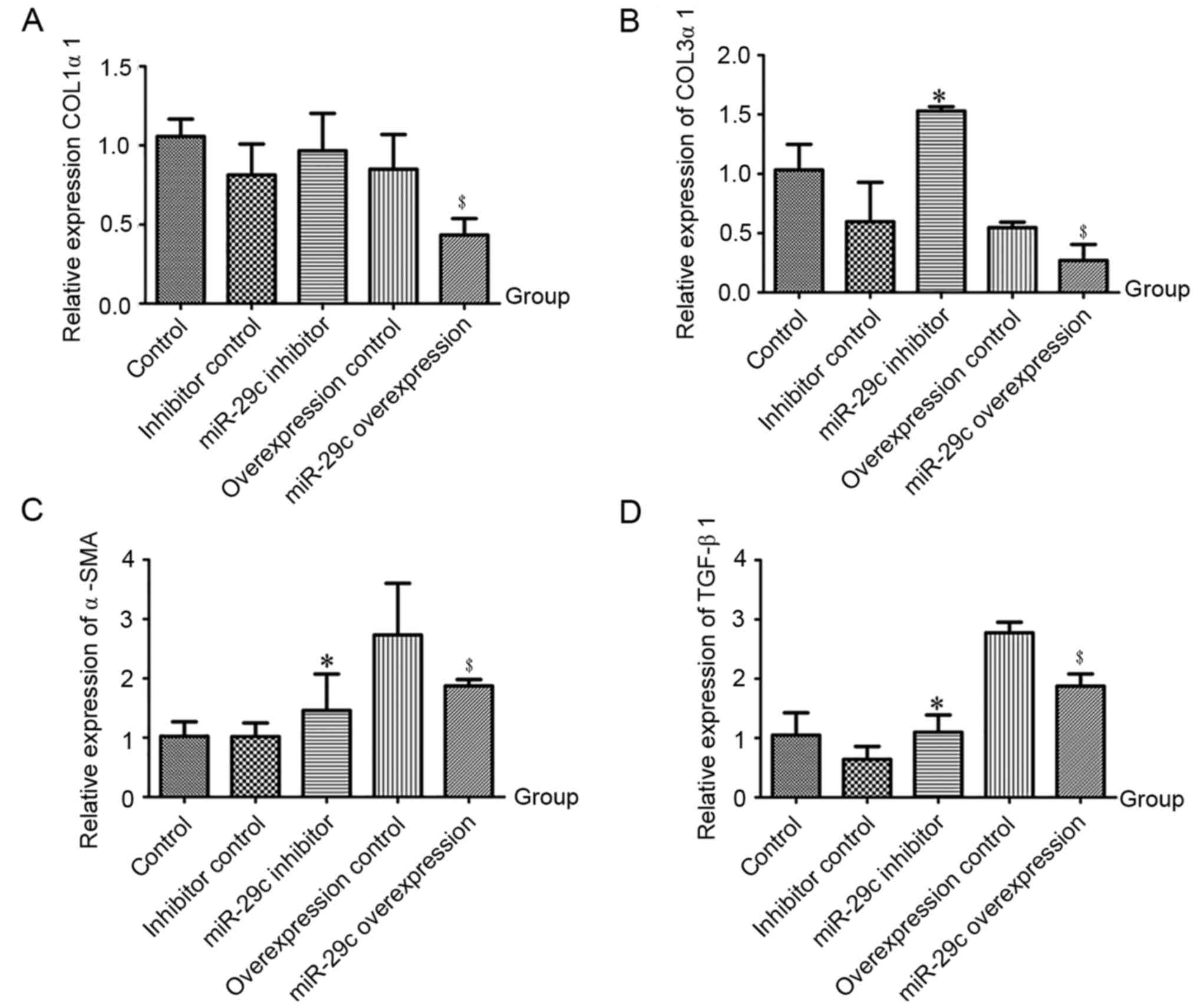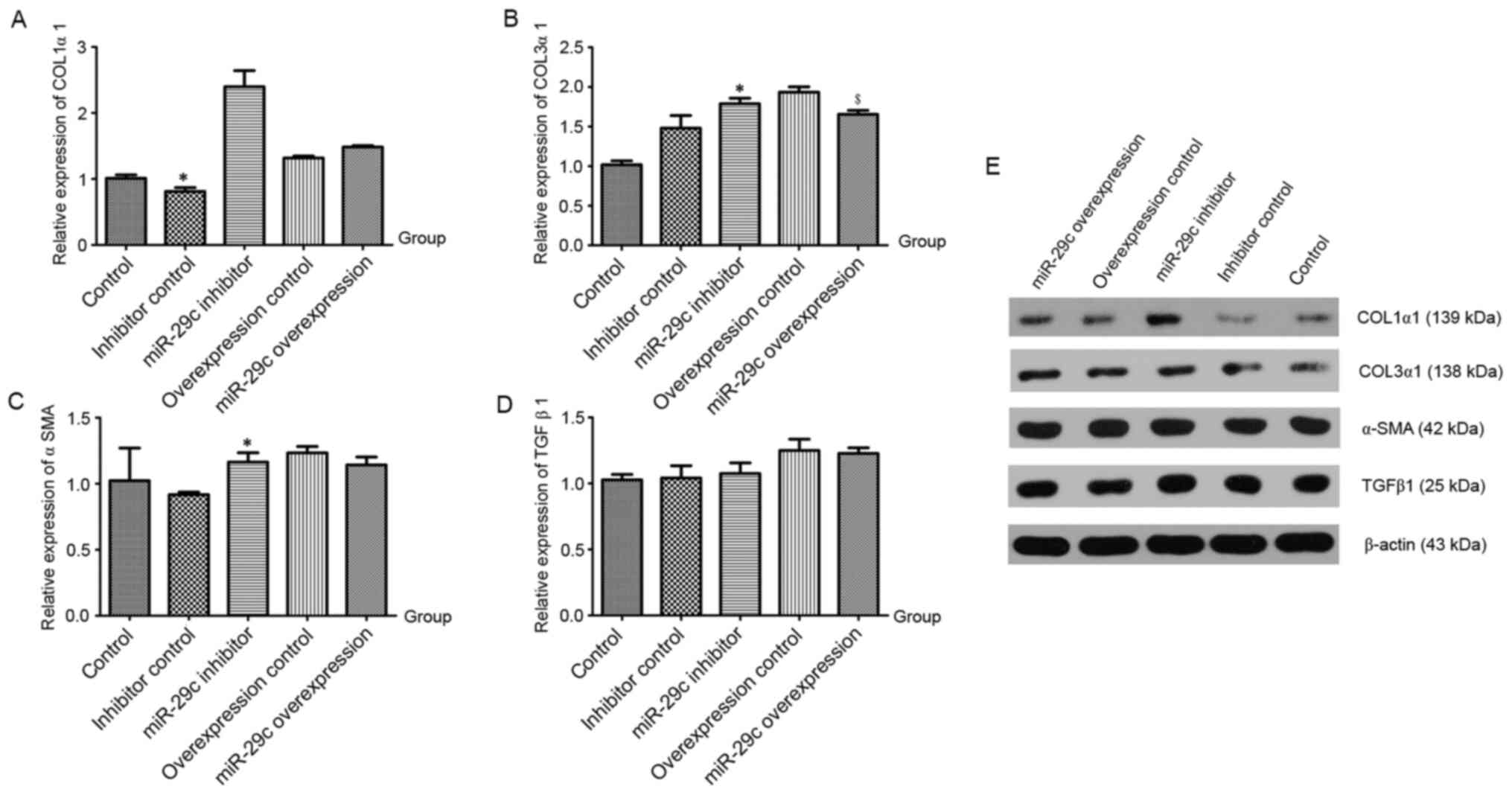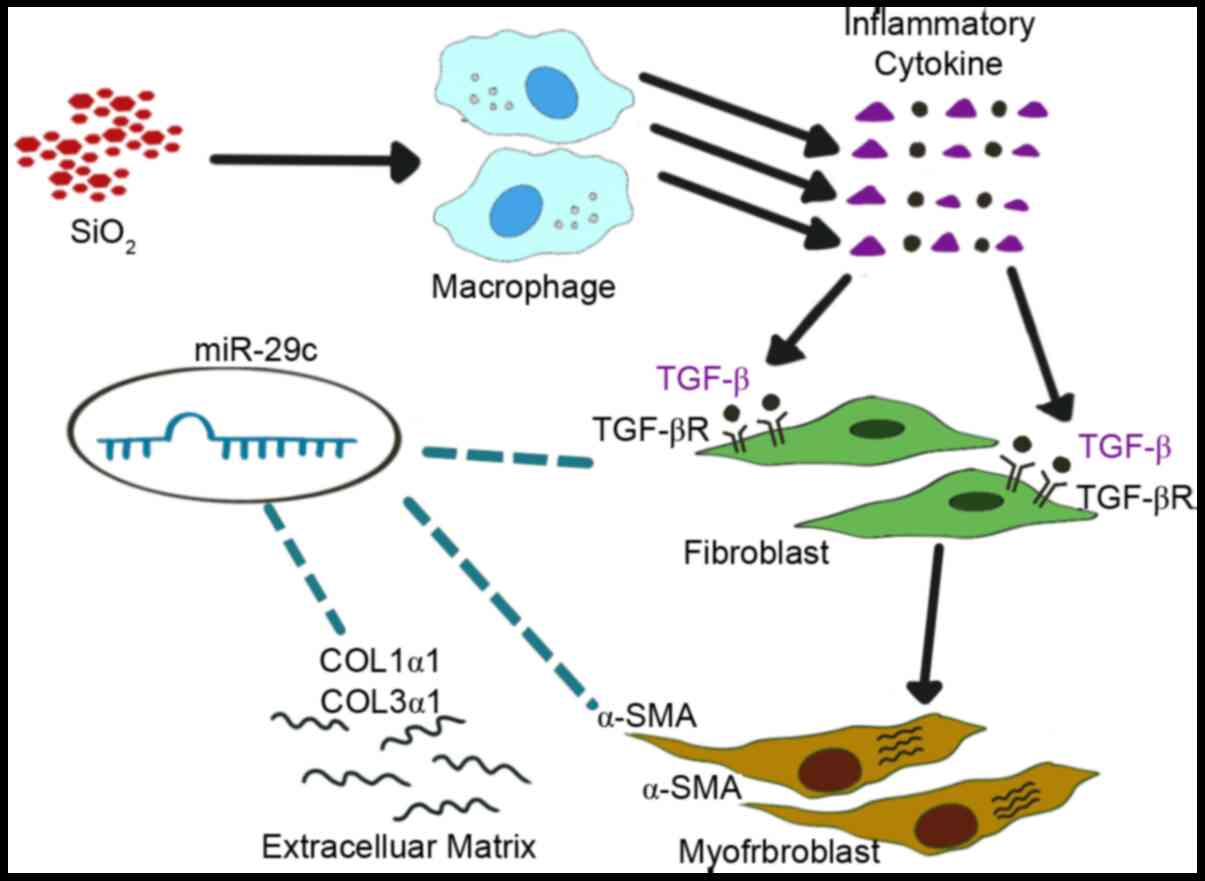|
1
|
Leung CC, Yu IT and Chen W: Silicosis.
Lancet. 379:2008–2018. 2012. View Article : Google Scholar : PubMed/NCBI
|
|
2
|
Shi P, Xing X, Xi S, Jing H, Yuan J, Fu Z
and Zhao H: Trends in global, regional and national incidence of
pneumoconiosis caused by different aetiologies: An analysis from
the global burden of disease study 2017. Occup Environ Med.
77:407–414. 2020. View Article : Google Scholar : PubMed/NCBI
|
|
3
|
Arcangeli G, Cupelli V and Giuliano G:
Effects of silica on human lung fibroblast in culture. Sci Total
Environ. 270:135–139. 2001. View Article : Google Scholar : PubMed/NCBI
|
|
4
|
Lehnert BE, Valdez YE, Lehnert NM, Park MS
and Englen MD: Stimulation of rat and murine alveolar macrophage
proliferation by lung fibroblasts. Am J Respir Cell Mol Biol.
11:375–385. 1994. View Article : Google Scholar : PubMed/NCBI
|
|
5
|
Greenberg MI, Waksman J and Curtis J:
Silicosis: A review. Dis Mon. 53:394–416. 2007. View Article : Google Scholar : PubMed/NCBI
|
|
6
|
Shimbori C, Bellaye PS, Xia J, Gauldie J,
Ask K, Ramos C, Becerril C, Pardo A, Selman M and Kolb M:
Fibroblast growth factor-1 attenuates TGF-β1-induced lung fibrosis.
J Pathol. 240:197–210. 2016. View Article : Google Scholar : PubMed/NCBI
|
|
7
|
Van Hoozen BE, Grimmer KL, Marelich GP,
Armstrong LC and Last JA: Early phase collagen synthesis in lungs
of rats exposed to bleomycin. Toxicology. 147:1–13. 2000.
View Article : Google Scholar : PubMed/NCBI
|
|
8
|
Gregory AD, Kliment CR, Metz HE, Kim KH,
Kargl J, Agostini BA, Crum LT, Oczypok EA, Oury TA and Houghton AM:
Neutrophil elastase promotes myofibroblast differentiation in lung
fibrosis. J Leukoc Biol. 98:143–152. 2015. View Article : Google Scholar : PubMed/NCBI
|
|
9
|
Noetel A, Kwiecinski M, Elfimova N, Huang
J and Odenthal M: microRNA are central players in anti- and
profibrotic gene regulation during liver fibrosis. Front Physiol.
3:492012. View Article : Google Scholar : PubMed/NCBI
|
|
10
|
Dostie J, Mourelatos Z, Yang M, Sharma A
and Dreyfuss G: Numerous microRNPs in neuronal cells containing
novel microRNAs. RNA. 9:180–186. 2003. View Article : Google Scholar : PubMed/NCBI
|
|
11
|
Cushing L, Kuang P and Lü J: The role of
miR-29 in pulmonary fibrosis. Biochem Cell Biol. 93:109–118. 2015.
View Article : Google Scholar : PubMed/NCBI
|
|
12
|
Qin W, Chung ACK, Huang XR, Meng XM, Hui
DS, Yu CM, Sung JJ and Lan HY: TGF-β/Smad3 signaling promotes renal
fibrosis by inhibiting miR-29. J Am Soc Nephrol. 22:1462–1474.
2011. View Article : Google Scholar : PubMed/NCBI
|
|
13
|
Roderburg C, Urban GW, Bettermann K, Vucur
M, Zimmermann H, Schmidt S, Janssen J, Koppe C, Knolle P, Castoldi
M, et al: Micro-RNA profiling reveals a role for miR-29 in human
and murine liver fibrosis. Hepatology. 53:209–218. 2011. View Article : Google Scholar : PubMed/NCBI
|
|
14
|
van Rooij E, Sutherland LB, Thatcher JE,
DiMaio JM, Naseem RH, Marshall WS, Hill JA and Olson EN:
Dysregulation of microRNAs after myocardial infarction reveals a
role of miR-29 in cardiac fibrosis. Proc Natl Acad Sci USA.
105:13027–13032. 2008. View Article : Google Scholar : PubMed/NCBI
|
|
15
|
Yang T, Liang Y, Lin Q, Liu J, Luo F, Li
X, Zhou H, Zhuang S and Zhang H: miR-29 mediates TGFβ1-induced
extracellular matrix synthesis through activation of PI3K-AKT
pathway in human lung fibroblasts. J Cell Biochem. 114:1336–1342.
2013. View Article : Google Scholar : PubMed/NCBI
|
|
16
|
Kwon JJ, Factora TD, Dey S and Kota J: A
systematic review of miR-29 in cancer. Mol Ther Oncolytics.
12:173–194. 2018. View Article : Google Scholar : PubMed/NCBI
|
|
17
|
Mestdagh P, Vandesompele J, Brusselle G
and Vermaelen K: Non-coding RNAs and respiratory disease. Thorax.
70:388–390. 2015. View Article : Google Scholar : PubMed/NCBI
|
|
18
|
Tang Y, He R, An J, Deng P, Huang L and
Yang W: The effect of H19-miR-29b interaction on bleomycin-induced
mouse model of idiopathic pulmonary fibrosis. Biochem Biophys Res
Commun. 479:417–423. 2016. View Article : Google Scholar : PubMed/NCBI
|
|
19
|
Cushing L, Kuang PP, Qian J, Shao F, Wu J,
Little F, Thannickal VJ, Cardoso WV and Lü J: miR-29 is a major
regulator of genes associated with pulmonary fibrosis. Am J Respir
Cell Mol Biol. 45:287–294. 2011. View Article : Google Scholar : PubMed/NCBI
|
|
20
|
Xiao J, Meng XM, Huang XR, Chung AC, Feng
YL, Hui DS, Yu CM, Sung JJ and Lan HY: miR-29 inhibits
bleomycin-induced pulmonary fibrosis in mice. Mol Ther.
20:1251–1260. 2012. View Article : Google Scholar : PubMed/NCBI
|
|
21
|
Lian X, Chen X, Sun J, An G, Li X, Wang Y,
Niu P, Zhu Z and Tian L: MicroRNA-29b inhibits supernatants from
silica-treated macrophages from inducing extracellular matrix
synthesis in lung fibroblasts. Toxicol Res (Camb). 6:878–888. 2017.
View Article : Google Scholar : PubMed/NCBI
|
|
22
|
Sun J, Li Q, Lian X, Zhu Z, Chen X, Pei W,
Li S, Abbas A, Wang Y and Tian L: MicroRNA-29b mediates lung
mesenchymal-epithelial transition and prevents lung fibrosis in the
silicosis model. Mol Ther Nucleic Acids. 14:20–31. 2019. View Article : Google Scholar : PubMed/NCBI
|
|
23
|
Faxuan W, Qin Z, Dinglun Z, Tao Z, Xiaohui
R, Liqiang Z and Yajia L: Altered microRNAs expression profiling in
experimental silicosis rats. J Toxicol Sci. 37:1207–1215. 2012.
View Article : Google Scholar : PubMed/NCBI
|
|
24
|
Livak KJ and Schmittgen TD: Analysis of
relative gene expression data using real-time quantitative PCR and
the 2(-Delta Delta C(T)) method. Methods. 25:402–408. 2001.
View Article : Google Scholar : PubMed/NCBI
|
|
25
|
Roncarati R, Viviani Anselmi C, Losi MA,
Papa L, Cavarretta E, Da Costa Martins P, Contaldi C, Saccani Jotti
G, Franzone A, Galastri L, et al: Circulating miR-29a, among other
up-regulated microRNAs, is the only biomarker for both hypertrophy
and fibrosis in patients with hypertrophic cardiomyopathy. J Am
Coll Cardiol. 63:920–927. 2014. View Article : Google Scholar : PubMed/NCBI
|
|
26
|
Knabel MK, Ramachandran K, Karhadkar S,
Hwang HW, Creamer TJ, Chivukula RR, Sheikh F, Clark KR, Torbenson
M, Montgomery RA, et al: Systemic delivery of scAAV8-encoded
MiR-29a ameliorates hepatic fibrosis in carbon
tetrachloride-treated mice. PLoS One. 10:e01244112015. View Article : Google Scholar : PubMed/NCBI
|
|
27
|
Li J, Yao W, Zhang L, Bao L, Chen H, Wang
D, Yue Z, Li Y, Zhang M and Hao C: Genome-wide DNA methylation
analysis in lung fibroblasts co-cultured with silica-exposed
alveolar macrophages. Respir Res. 18:912017. View Article : Google Scholar : PubMed/NCBI
|
|
28
|
Massagué J, Blain SW and Lo RS: TGF beta
signaling in growth control, cancer, and heritable disorders. Cell.
103:295–309. 2000. View Article : Google Scholar : PubMed/NCBI
|
|
29
|
Attisano L and Wrana JL: Signal
transduction by the TGF-beta superfamily. Science. 296:1646–1647.
2002. View Article : Google Scholar : PubMed/NCBI
|
|
30
|
Du B, Ma LM, Huang MB, Zhou H, Huang HL,
Shao P, Chen YQ and Qu LH: High glucose down-regulates miR-29a to
increase collagen IV production in HK-2 cells. FEBS Lett.
584:811–816. 2010. View Article : Google Scholar : PubMed/NCBI
|
|
31
|
Luna C, Li G, Qiu J, Epstein DL and
Gonzalez P: Role of miR-29b on the regulation of the extracellular
matrix in human trabecular meshwork cells under chronic oxidative
stress. Mol Vis. 15:2488–2497. 2009.PubMed/NCBI
|
|
32
|
Wang B, Komers R, Carew R, Winbanks CE, Xu
B, Herman-Edelstein M, Koh P, Thomas M, Jandeleit-Dahm K,
Gregorevic P, et al: Suppression of microRNA-29 expression by
TGF-β1 promotes collagen expression and renal fibrosis. J Am Soc
Nephrol. 23:252–265. 2012. View Article : Google Scholar : PubMed/NCBI
|
|
33
|
Jiang L, Zhou Y, Xiong M, Fang L, Wen P,
Cao H, Yang J, Dai C and He W: Sp1 mediates microRNA-29c-regulated
type I collagen production in renal tubular epithelial cells. Exp
Cell Res. 319:2254–2265. 2013. View Article : Google Scholar : PubMed/NCBI
|
|
34
|
Lan HY and Chung ACK: Transforming growth
factor-β and Smads. Contrib Nephrol. 170:75–82. 2011. View Article : Google Scholar : PubMed/NCBI
|
|
35
|
Chung AC, Dong Y, Yang W, Zhong X, Li R
and Lan HY: Smad7 suppresses renal fibrosis via altering expression
of TGF-β/Smad3-regulated microRNAs. Mol Ther. 21:388–398. 2013.
View Article : Google Scholar : PubMed/NCBI
|
|
36
|
Zhang HY and Phan SH: Inhibition of
myofibroblast apoptosis by transforming growth factor beta(1). Am J
Respir Cell Mol Biol. 21:658–665. 1999. View Article : Google Scholar : PubMed/NCBI
|
|
37
|
Hu B and Phan SH: Myofibroblasts. Curr
Opin Rheumatol. 25:71–77. 2013. View Article : Google Scholar : PubMed/NCBI
|
|
38
|
Sengupta S, den Boon JA, Chen IH, Newton
MA, Stanhope SA, Cheng YJ, Chen CJ, Hildesheim A, Sugden B and
Ahlquist P: MicroRNA 29c is down-regulated in nasopharyngeal
carcinomas, up-regulating mRNAs encoding extracellular matrix
proteins. Proc Natl Acad Sci USA. 105:5874–5878. 2008. View Article : Google Scholar : PubMed/NCBI
|
|
39
|
Wang M, Yang ZK, Liu H, Li RQ, Liu Y and
Zhong WJ: Genipin inhibits the scleral expression of miR-29 and
MMP2 and promotes COL1A1 expression in myopic eyes of guinea pigs.
Graefes Arch Clin Exp Ophthalmol. 258:1031–1038. 2020. View Article : Google Scholar : PubMed/NCBI
|
|
40
|
Han Z, Zhang T, He Y, Li G, Li G and Jin
X: Inhibition of prostaglandin E2 protects abdominal aortic
aneurysm from expansion through regulating miR-29b-mediated
fibrotic ECM expression. Exp Ther Med. 16:155–160. 2018.PubMed/NCBI
|
|
41
|
Chen Y, Mohammed A, Oubaidin M, Evans CA,
Zhou X, Luan X, Diekwisch TG and Atsawasuwan P: Cyclic stretch and
compression forces alter microRNA-29 expression of human
periodontal ligament cells. Gene. 566:13–17. 2015. View Article : Google Scholar : PubMed/NCBI
|
|
42
|
Maurer B, Stanczyk J, Juengel A,
Akhmetshina A, Trenkmann M, Brock M, Kowal-Bielecka O, Gay RE,
Michel BA, Distler JH, et al: MicroRNA-29, a key regulator of
collagen expression in systemic sclerosis. Arthritis Rheum.
62:1733–1743. 2010. View Article : Google Scholar : PubMed/NCBI
|















